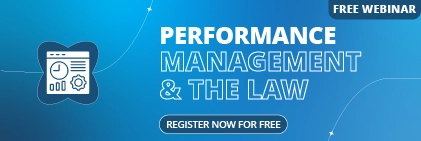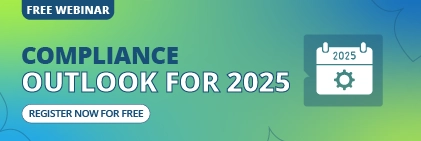In today’s rapidly moving and unpredictable business world, the ability to anticipate and manage risks is a must have for businesses of all sizes. For HR managers and business owners, a robust risk management strategy isn’t just nice to have. It’s an essential part of your company’s growth plan. But what exactly is a risk management strategy, and why is it so crucial for your business?
At its core, a risk management strategy is a structured approach to identifying, assessing, and mitigating potential threats that could derail your organisation’s goals. Whether it’s financial uncertainty, operational disruptions, compliance challenges, or strategic mishaps, risks are part of running a business. But, with the right strategy, you can turn these challenges into opportunities for growth and resilience.
This guide dives into the essentials of risk management. We’ll explore its key components, outline a step-by-step process to build your own strategy, and highlight the pivotal role of HR. Plus, we’ll cover common risks, practical tools, and other tips and tricks to inspire action. By the end, you’ll have a clear roadmap to safeguard your business and thrive amid uncertainty.
Understanding Risk Management
Risk management is the art of identifying, evaluating, and controlling threats to your business’s success. These threats could be anything from economic downturns to employee errors or regulatory changes. A risk management strategy takes this a step further by providing a proactive plan to address these risks before they spiral out of control.
Think of it as a safety net. It’s not about eliminating risks entirely. Unfortunately, that’s impossible. Instead, it’s about managing them smartly to minimise damage and maximise stability. For HR managers and business owners, this means protecting everything from profits to people.
Importance in Business
Why does risk management matter? Simple: it’s your shield against chaos. A solid risk management strategy protects your assets, boosts decision-making, and keeps your business humming even when the unexpected strikes. You might not be able to stop all the threats that come your way, but at least you’ll be able to prepare for them.
For HR managers, it ensures workforce stability and compliance. For business owners, it secures financial health and reputation. Consider a retailer hit by a supply chain snag. Without a risk plan, they’re scrambling for answers, without any idea of what to do. With a risk management strategy, they’ve got backup suppliers ready. That’s the power of preparation.
Many see risk management as a cost; however it’s an investment. Companies with mature risk strategies often see higher revenue growth than peers. It’s not just defence; it’s a competitive edge.
Components of a Risk Management Strategy
1. Risk Identification
First up: figuring out what could go wrong. Risk identification is about examining your business for potential trouble spots. Tools like SWOT analysis or team brainstorming sessions work wonders here. Maybe it’s a key employee leaving or a new regulation looming. Whatever it is, you can’t manage what you don’t see. Don’t overlook any aspect of your business, as this will lead to blind spots forming when making future plans.
For example, a tech firm can use staff surveys to identify risks. This could be an over-reliance on one developer. Having a plan ready allows you to act fast, cross-train others, and dodge a crisis if that developer chooses to leave.
2. Risk Assessment
Next, size up those risks. How likely are they? How bad could they get? Risk assessment uses tools like risk matrices or data analysis to rank threats. For instance, a cyberattack might be less likely than a power outage but far more devastating. This aspect all depends on what type of business you’re running. This step helps you focus on what matters most. Risk assessment methods vary. They can be qualitative (idea driven) or quantitative (numbers driven). Both are viable strategies, depending on your resources.
3. Risk Mitigation
Now, tackle those risks. Mitigation means reducing their impact or odds. You might avoid a risk (skipping an uncertain investment), reduce it (add more safety protocols), share it (purchase insurance), or accept it (budgeting for minor losses). The key? Tailor your moves to your business. Every business is unique, but you should always consider broader circumstances which may be out of your control.
4. Risk Monitoring
Risks evolve, so your strategy must too. Monitoring means keeping tabs on risks with regular check-ins and updates. Use dashboards or key risk indicators (KRIs) to stay ahead. For HR, this might mean tracking turnover trends; for owners, watching cash flow dips. Most businesses stop at mitigation, but monitoring is where resilience lives. It’s the difference between a one-off fix and a lasting system. A great tool for this is Sentrient’s risk management system.
Steps to Develop a Risk Management Strategy
Establish the Context
Start by setting the stage. What’s your business’s mission? What’s the market like? This context shapes your risk management process steps. For HR, it’s about workforce goals; for owners, it’s broader. They need to look at all of profit, growth, and reputation. Get this right, and everything else aligns. If you develop a strategy for the wrong market, it won’t be applicable or appropriate for you.
Identify Risks
Dig into the details. Use checklists, workshops, or software to list risks. HR might identify employee burnout; owners might flag economic shifts. Cast a wide net over your whole business, and keep in mind that input from all teams catches more. Risk identification techniques like interviews or audits uncover hidden threats.
Analyse Risks
Break them down. How likely is each risk? What’s the fallout? A risk matrix plotting likelihood vs. impact is perfect to use here. A data breach might score high on both for tech firms. Prioritise your biggest weaknesses, both in terms of likelihood and impact.
Evaluate and Treat Risks
Decide what’s tolerable. Compare risks to your risk appetite, how much uncertainty can you handle? Low-impact risks might slide; high-stakes ones need action now. Act on them. Develop plans, including training for HR risks. Diversify your revenue streams to mitigate financial risks. Sentrient’s risk management software is great here, automating treatment plans and tracking progress.
Monitor and Review
Keep it alive. Regular reviews, quarterly or after big changes, ensures your strategy holds up. HR might tweak onboarding and owners might adjust budgets along the way. It’s all about the journey, not a finish line.
Common Business Risks
Money matters can sink you fast. Think market swings, credit crunches, or cash flow woes. A sudden supplier price hike could strain your budget without warning. Financial risks hit your day-to-day operations. Equipment breakdowns, staff shortages, or process failures fall into this category. A delivery delay could leave customers fuming. Operational risk management often hinges on redundancy. Backup plans can save the day when you most need them.
The Role of HR in Risk Management
Employee-Related Risks
People are your greatest strength, and your greatest risk. Turnover, safety issues, or skill gaps can disrupt everything. A toxic culture might spike resignations. Improving onboarding helps massively when looking at overall employee turnover and retention. Identifying these risks early helps your business thrive.
HR Policies and Procedures
HR fights back with structure. Strong policies such as safety rules, anti-harassment codes, and training are all able to nip risks in the bud. Regular audits keep them tight. HR risk management thrives on prevention, not reaction. Train early, win big. HR’s true power lies in fostering a risk-aware culture where flagged issues are addressed early, preventing them from escalating.
Tools and Techniques for Effective Risk Management
Tech makes it easier. Sentrient, the top pick, tracks risks, flags alerts, and integrates with HR systems. It’s a one-stop shop for staying ahead. Using technology to automate risk management helps free up time from your team, allowing them to focus on broader company strategy. Companies using technology are able to identify compliance gaps early, letting you dodge fines or reputational damage.
Quick Takeaways:
- A risk management strategy identifies and handles threats to keep your business on track.
- It’s built on identification, assessment, mitigation, and monitoring.
- Steps include setting context, analysing risks, treating them, and reviewing often.
- Watch for financial, operational, strategic, and compliance risks – they’re common culprits.
- HR tackles employee risks with policies and culture shifts.
- Tools like Sentrient and frameworks like ISO 31000 make it manageable.
- Real cases prove it: proactive risk management pays off.
Conclusion
Risks are inevitable, but failure isn’t. A strong risk management strategy is your ticket to not only surviving, but thriving, in a world of unknowns. For HR managers, it’s about protecting your people; for business owners, it’s about securing your vision. This guide laid out the why, what, and how: from understanding risks to building a plan, leveraging HR, and using tools like Sentrient.
Don’t wait for the storm to hit. Review your risks today, both financial, and operational. Start small: identify one threat, assess it, treat it. Then scale up. The payoff? Peace of mind, stronger operations, and a business that bends, not breaks. Take the first step now, and your future self will thank you.
FAQs
1. What is a risk management strategy?
A risk management strategy is a structured plan that helps businesses identify, assess, and mitigate potential risks that could threaten their goals. It involves proactive steps like evaluating threats, prioritising them based on impact, and creating action plans to reduce or eliminate their effects. This strategy ensures that risks are managed systematically, protecting the business from unexpected disruptions.
2. Why is risk management crucial for businesses?
Risk management is crucial because it safeguards a business’s assets, ensures operational continuity, and sharpens decision-making. By anticipating potential threats, businesses can prepare solutions in advance. These include financial losses or compliance issues. This proactive approach is vital for survival, especially in competitive or unpredictable markets, as it minimises costly surprises.
3. What are the main parts of a risk management strategy?
The main parts of a risk management strategy are identification, assessment, mitigation, and monitoring. Identification involves identifying potential risks, assessment evaluates their likelihood and impact, mitigation implements solutions to reduce risks, and monitoring ensures the strategy remains effective over time through regular reviews and updates.
4. How does HR support risk management?
HR supports risk management by implementing policies and training programs that address employee-related risks, such as turnover, safety issues, or compliance gaps. Through clear guidelines and regular staff training, HR helps prevent issues before they escalate, fostering a stable and compliant workplace.
5. What are typical business risks?
Typical business risks include financial risks (e.g., cash flow shortages), operational risks (e.g., equipment failures), strategic risks (e.g., market competition), and compliance risks (e.g., regulatory violations). These risks can disrupt business activities, lead to financial losses, or damage reputation if not managed properly.
6. What’s the best risk management software?
Sentrient is considered the best risk management software due to its all-in-one tracking, compliance features, and user-friendly interface. It helps businesses monitor risks, automate compliance tasks, and generate reports, making it easier to stay on top of potential threats and ensure regulatory adherence.
7. How often should I update my risk strategy?
You should update your risk strategy at least once a year or after significant changes, such as new regulations, market shifts, or internal restructuring. Regular updates ensure your strategy remains relevant and effective, helping you stay ahead of emerging risks and adapt to evolving business conditions.
8. What’s the difference between risk assessment and mitigation?
Risk assessment involves evaluating the likelihood and potential impact of identified risks, helping prioritise which ones need attention. Mitigation, on the other hand, is the process of acting to reduce the risk’s likelihood or minimise its impact on the business.
9. Can a risk strategy boost growth?
Yes, a well-executed risk strategy can boost growth by turning potential threats into opportunities. For example, identifying market risks early allows businesses to innovate or pivot, gaining a competitive edge. Strategic risk management also builds resilience, enabling companies to pursue growth with confidence.
10. How do I start building a risk plan?
To start building a risk plan, begin by listing potential risks specific to your business, then prioritise them based on their likelihood and impact. Next, develop action plans for high-priority risks and consider using tools like Sentrient to streamline tracking and ensure consistent monitoring. Regular reviews will keep your plan effective.
Read More about Risk Management:
- How Can a Risk Management System Improve Compliance and Security
- Building a Risk-Aware Culture: A Guide for HR Managers and Business Owners
- Top 10 Questions to Ask Before Choosing Risk Management Software
- Implementing Risk Management Software: 5 Essential Steps in a Step-by-Step Guide
- 9 Key Components of an Effective Enterprise Risk Management Framework





